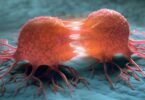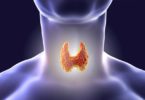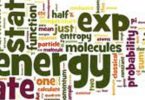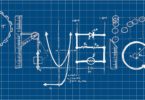Gaseous state solved MCQ:
Equal volumes of two gases which do not react together are enclosed in separate vessels. Their pressures at 100 mm and 400 mm respectively. If the two vessels are joined together, then what will be the pressure of the resulting mixture (temperature remaining constant)
(a) 125 mm
(b) 500 mm
(c) 1000 mm
(d) 250 mm
In deriving the kinetic gas equation, use is made of the root mean square velocity of the molecules because it is
(a) The average velocity of the molecules
(b) The most probable velocity of the molecules
(c) The square root of the average square velocity of the molecules
(d) The most accurate form in which velocity can be used in these calculations
A gas of volume 100 cc is kept in a vessel at pressure 104 Pa maintained at temperature 24o C. If now the pressure is increased to 105 Pa, keeping the temperature constant, then the volume of the gas becomes
(a) 10 cc
(b) 100 cc
(c) 1 cc
(d) 1000 cc
With increase of pressure, the mean free path
(a) Decreases
(b) Increases
(c) Does not change
(d) Becomes zero
Related: Amino Acid mcq
A sample of O2 gas is collected over water at 23oC at a barometric pressure of 751 mm Hg (vapour pressure of water at 23o C is 21 mm Hg). The partial pressure of O2 gas in the sample collected is
(a) 21 mm Hg
(b) 751 mm Hg
(c) 0.96 atm
(d) 1.02 atm
At the same temperature and pressure, which of the following gases will have the highest kinetic energy per mole
(a) Hydrogen
(b) Oxygen
(c) Methane
(d) All the same
If a gas is expanded at constant temperature
(a) The pressure increases
(b) The kinetic energy of the molecules remains the same
(c) The kinetic energy of the molecules decreases
(d) The number of molecules of the gas increases
The r.m.s. velocity of a gas depends upon
(a) Temperature only
(b) Molecular mass only
(c) Temperature and molecular mass of gas
Related: Kingdom monera characteristics Quiz
In a closed flask of 5 litres, 1.0 g of H2 is heated from 300 to 600 K. which statement is not correct
(a) Pressure of the gas increases
(b) The rate of collision increases
(c) The number of moles of gas increases
(d) The energy of gaseous molecules increases
If the pressure and absolute temperature of 2 litres of CO2 are doubled, the volume of CO2 would become
(a) 2 litres
(b) 4 litres
(c) 5 litres
(d) 7 litres
In the equation of sate of an ideal gas PV = nRT, the value of the universal gas constant would depend only on
(a) The nature of the gas
(b) The pressure of the gas
(c) The units of the measurement
Same mass of CH4 and H2 is taken in container. The partial pressure caused by H2 is
(a) 8 / 9
(b) 1 / 9
(c) 1 / 2
(d) 1
Related: Respiratory system quiz
Weight of 112 ml of oxygen at NTP on liquefaction would be
(a) 0.32 g
(b) 0.64 g
(c) 0.16 g
(d) 0.96 g
When an ideal gas undergoes unrestrained expansion, no cooling occurs because the molecules?
(a) Are above the inversion temperature
(b) Exert no attractive force on each other
(c) Do work equal to loss in kinetic energy
(d) Collide without loss of energy
Which set of conditions represents easiest way to liquefy a gas?
(a) Low temperature and high pressure
(b) High temperature and low pressure
(c) Low temperature and low pressure
(d) High temperature and high pressure
The temperature at which RMS velocity of SO2 molecules is half that of He molecules at 300 K is
(a) 150 K
(b) 600 K
(c) 900 K
(d) 1200 K
Related: Hybridisation chemistry
Which one of the following statements is wrong for gases?
(a) Gases do not have a definite shape and volume
(b) Volume of the gas is equal to the volume of the container confining the gas
(c) Confined gas exerts uniform pressure on the walls of its container in all directions
(d) Mass of the gas cannot be determined by weighing a container in which it is enclosed
Gas deviates from ideal gas nature because molecules
(a) Are colourless
(b) Attract each other
(c) Contain covalent bond
(d) Show Brownian movement
At constant temperature, in a given mass of an ideal gas
(a) The ratio of pressure and volume always remains constant
(b) Volume always remains constant
(c) Pressure always remains constant
(d) The product of pressure and volume always remains constant
Equal volumes of two gases which do not react together are enclosed in separate vessels. Their pressures at 100 mm and 400 mm respectively. If the two vessels are joined together, then what will be the pressure of the resulting mixture (temperature remaining constant)
(a) 125 mm
(b) 500 mm
(c) 1000 mm
(d) 250 mm
Related: Capacitance question bank
In the equation of sate of an ideal gas PV = nRT, the value of the universal gas constant would depend only on
(a) The nature of the gas
(b) The pressure of the gas
(c) The units of the measurement
By what ratio the average velocity of the molecule in gas change when the temperature is raised from 50 to 200o C
(a) 1.21 / 1
(b) 1.46 / 1
(c) 1.14 / 1
(d) 4 / 1
Molecular weight of a gas that diffuses twice as rapidly as the gas with molecular weight 64 is
(a) 16
(b) 8
(c) 64
(d) 6.4
If a gas is expanded at constant temperature
(a) The pressure increases
(b) The kinetic energy of the molecules remains the same
(c) The kinetic energy of the molecules decreases
(d) The number of molecules of the gas increases
Related: Binomial theorem questions
Who among the following scientists has not done any important work on gases?
(a) Boyle
(b) Charles
(c) Avogadro
(d) Faraday
If the average velocity of N2 molecule is 0.3 m/s at 27o C, then the velocity will be 0.6 m/s at
(a) 1000 K
(b) 1600 K
(c) 140 K
(d) 1800 K
How will you separate mixture of two gases?
(a) Fractional distillation technique
(b) Grahams law of diffusion technique
(c) Osmosis
(d) Chromatography
A gas of volume 100 cc is kept in a vessel at pressure 104 Pa maintained at temperature 24o C. If now the pressure is increased to 105 Pa, keeping the temperature constant, then the volume of the gas becomes
(a) 10 cc
(b) 100 cc
(c) 1 cc
(d) 1000 cc
Related: kingdom Animalia quiz
Ratio of average to most probable velocity is
(a) 1.128
(b) 1.224
(c) 1.0
(d) 1.112
The r.m.s. velocity of a certain gas is v at 300 K. The temperature, at which the r.m.s. velocity becomes double
(a) 1200 K
(b) 900 K
(c) 600 K
(d) 150 K
The ratio of root mean square velocity to average velocity of gas molecules at a particular temperature is
(a) 1.086 : 1
(b) 1 : 1.086
(c) 2 : 1.086
(d) 1.086 : 2
Which is not true in case of an ideal gas?
(a) It cannot be converted into a liquid
(b) There is no interaction between the molecules
(c) All molecules of the gas move with same speed
(d) At a given temperature, PV is proportional to the amount of the gas
At what temperature the RMS velocity of SO2 be same as that of O2 at 303 K
(a) 273 K
(b) 606 K
(c) 303 K
(d) 403 K
Consider a mixture of SO2 and O2 kept at room temperature. Compared to the oxygen molecule, the SO2 molecule will hit the wall with
(a) Smaller average speed
(b) Greater average speed
(c) Greater kinetic energy
(d) Greater mass
Which of the following gases is used to prepare Ammonia gas?
(a) Nitrogen and oxygen
(b) Nitrogen and oxide
(c) Nitrogen and hydrogen
(d) Nitrogen and carbon
Which is the gas used for producing a hot flame for welding?
(a) Acetylene
(b) Ammonia
(c) Propane
(d) Ethylene
Which gas is used in flash lamps and lasers?
(a) Neon
(b) Propane
(c) Radon
(d) Xenon
If the average velocity of N2 molecule is 0.3 m / s at 27o C, then the velocity will be 0.6 m / s at
(a) 1200 K
(b) 600 K
(c) 400 K
(d) 1800 K








i had nice experience..
i had nice experience..